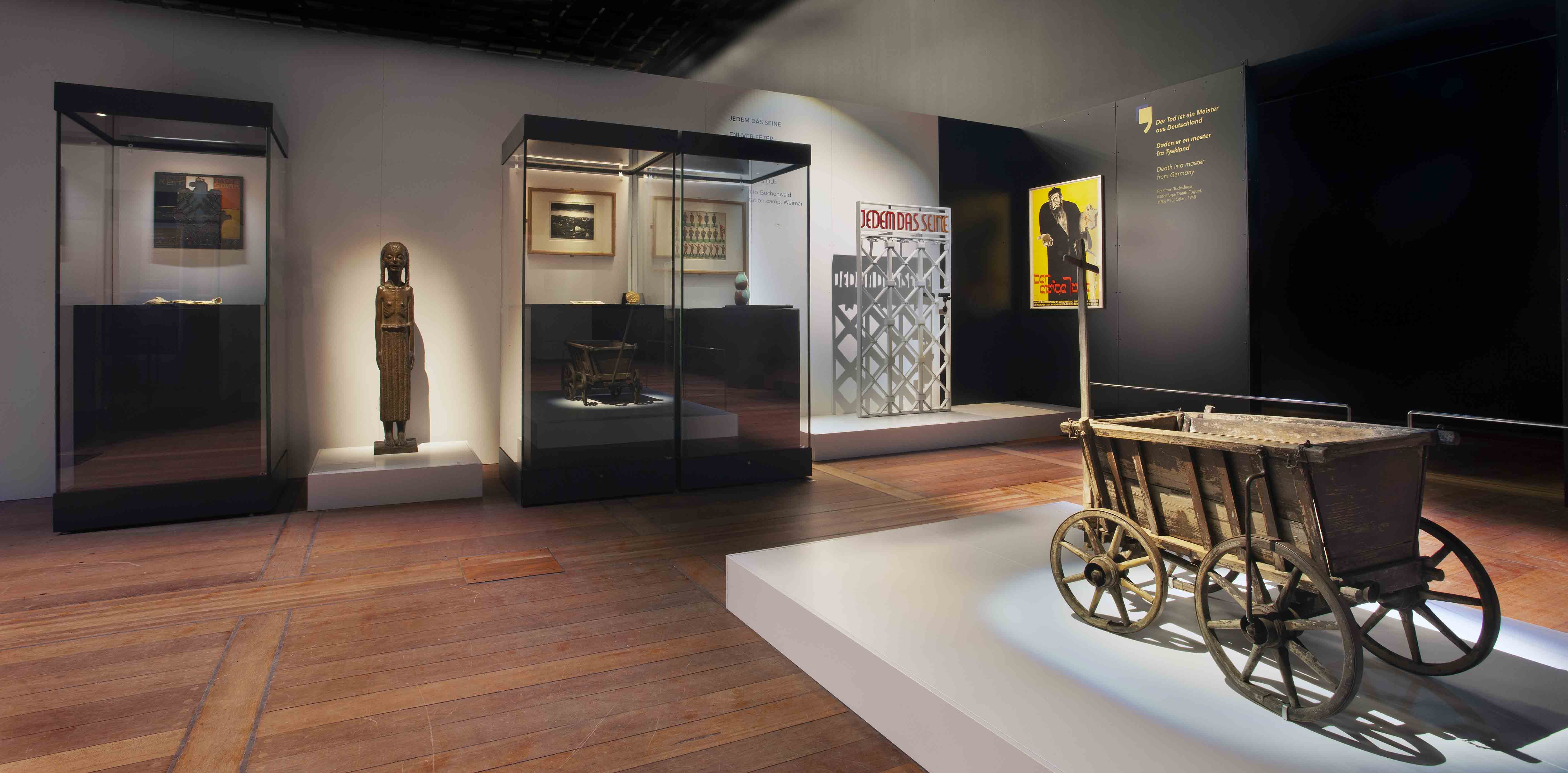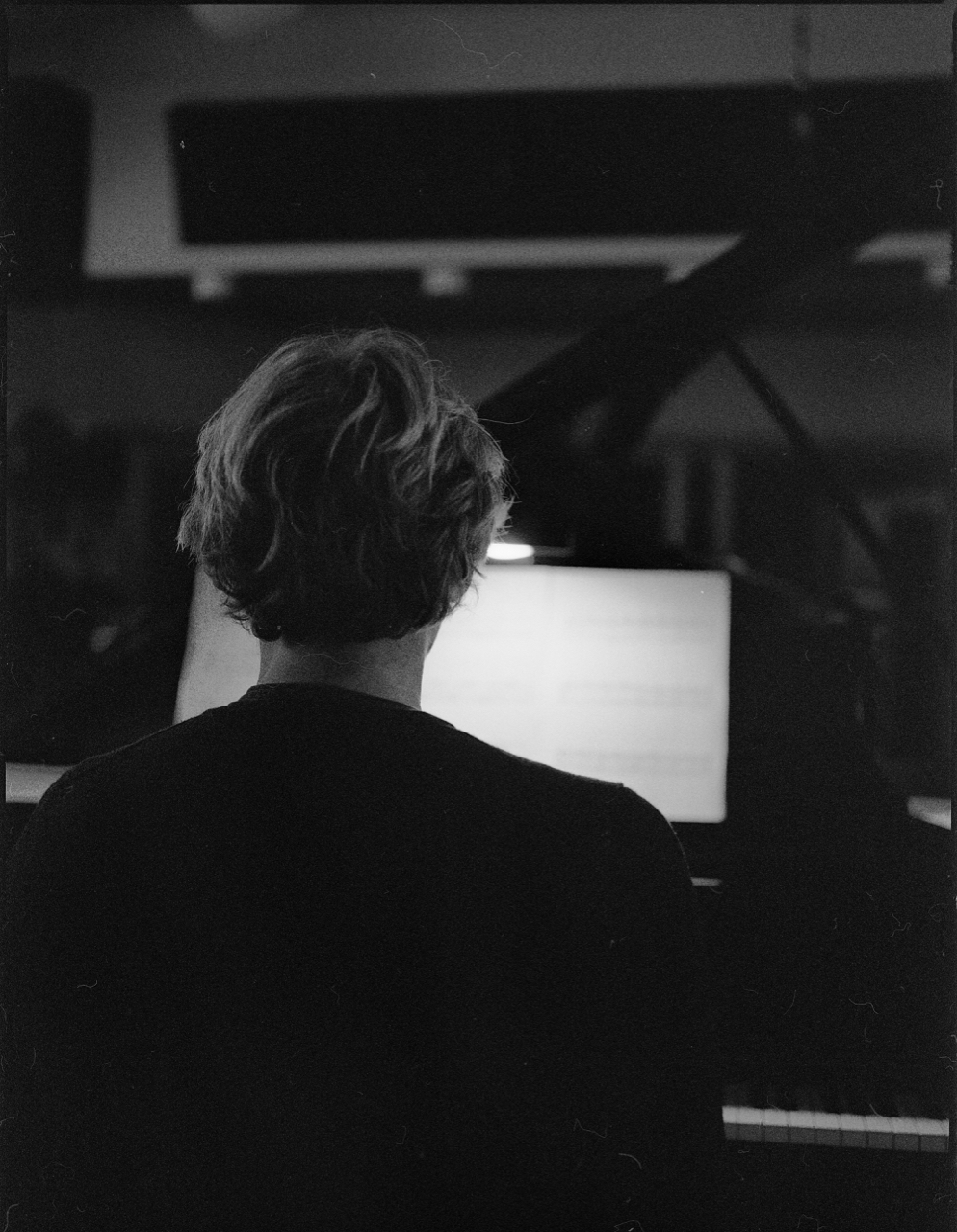There are 6 sections in the score divided into pairs, 2 for each of the first 3 benches. The section starts with the sound a shutter mechanism in a camera advancing the filmroll to the next frame. The mirror in the camera pulls into position for you to frame your image through its reflection in the viewfinder. When the shutter is pressed, the mirror will quickly retract so the shutter mechanism will let the light through the lens to expose the negative. I like this brief encounter with the mirror. Instead of looking at your own reflection, this mirror is used to reflect the world and then comes the capture of a moment.
The next sound is related to a tape-recording of the string recordings done for the project – not the string recordings themselves – just the machine rewinding the tape used. I recorded this sound both of the tape rewinding (time effectively passing in reverse and at high velocity).
As we hear the tape rewinding, we are outside of the music, yet given a hint that some proces has taken place.
Also I recorded what the the output of what the machine recorded during the rewind.
I sat with a pencil preventing the machine from moving the tape away from the playback head- because of the violent torque in the winding motors would have caused the tape to grind the surface of the fragile head, effectively destroying it. This recording is only of those magnetic particles that fluctuated between far-away and perceivable to the playback head.
This is a technique I have grown fund of because it is like a performance and in this case it reminded me of Richters blurring. The playback head becomes an ”audience” to this performance only perceiving the ghostly smidgins that it was able to register.
When recording while the recorder is rewinding, one gets a completely transformed version of the contents of the tape, as its entire contents is now less than one minute long, despite its 22 minute duration at regular playback speed.
As I lowered the speed of the tape back to normal I now have a 1/22 resolution version that sounds like recalling faded memories, eroded from time.
The string recordings, on the tape, came about as annother layer of processing (and possibly the most important one in this project). I reached out to my friend, composer Kristian Rymkier. He makes exquisite music by himself and I became curious to see what would happen if I sent him some of my initial drafts (done in the computer as sound files) for him to transform into musical notation. Some were melodic lines that needed a direct transcription, but mostly I asked him to transform and modulate the sounds into tiny abstract pieces for cello, viola and violin as well as piano. Kristian created so much material and followed the project further into the recordings where he directed the musicians. I am very grateful for his contribution and generosity to this project.
I chose pianist Søren Kjærgaard (who is one of my favourite musicians) to record our piano parts. Mostly, the parts were reproducing what the notation instructed, but Kristian and I had been toying with the idea of including a Bach-style fugue. It didn’t work but Kristian had notated all of the chords of the small piece so we gave it to Søren for him to use as a lead sheet (used in jazz music for the musicians to know the structure of a song). Søren did some improvised takes on this sheet of music and that became the first melodic line we hear in Section 1.
What began as my fugue, was taken further by Kristian, then reduced to its chord structure and interpreted by Søren, who used his musicality to perform its final transformation. The significance here is the transformation from a classical fugue into contemporary interpretation.
At this point I felt that I had accomplished my adaptation of Richters process, therefore I began to focus on incorporating some references, of subtle nature, to some of the objects in the exhibition and of my own abstractions. I imagined the sound of a Refugee handcarts wheels pushing down into a dirt road caused by the weight of its contents (Reference to chapter 26 in Memories of a Nation, The Germans Expelled - And Bertolt Brechts famous play, Mutter Courage).
 Photo: John Lee, Nationalmuseet
Photo: John Lee, NationalmuseetAlso in Section 2/6, a simple piano melody played forward and backwards became a simple musical representation of soldiers pushing borders back and forth. In Section 4/6 the glissandi of the strings are nosediving Stuka JU87s. In Section 6/6, the piano is playing my first original draft for the score. This melody served as the starting point for many of Kristians small compositions. In this section, strings from all the sections are built into one song. Through this section I have re-recorded the string-parts through an old public address horn-speaker, as if they were a political speech given to a crowd.
Should you have a knack for morsecode, there might just be a challenge for you in Section 6/6. I hope that some of these references to the book, to Betty and to the exhibition gives the score the verticality that I think Neil MacGregor and The Danish National Museum has achieved in their work.
Where, throughout the rooms, the headphones are the musical source, now the penultimate bench is different. In this room - speakers were installed as invisible projectors in the dark ceiling allowing me to create a series of “impressions”, a 7th section, an amalgam of the entire score.
As you sit there (and it really takes a little time to surrender to the cadence of the installed sound), you will register the following; People pass by. As you start listening you will hear these blurry sounds being a smudged distance between you and the music you have heard in the headphones. As you sit there for any given time, you may experience having been In a space within the space- before you to head to the exit.
Betty is placed right next to the exit in the last room, oddly enough easy to miss for a visitor.
When you exit the space you will either see or not see Betty, if you are paying attention you will notice Richters signature ”blurring” of the motive. It creates a distance, a filter between the hyperrealistic image and the viewer. Just like the blurry fragments of my piece you that you heard while sitting on the last bench.
I would like to extend my biggest thanks to Knud Romer, Steen Lassen of the Sportsgood Foundation and the Danish National Museum. I am grateful for your support, criticisms, and faith in commissioning this music from me. In the short time available from the commission to the opening I took great pleasure in researching, working with my team and realising this music.
Mike Sheridan,
Feb, 2020
 I took this photo of Søren Kjærgaard facing the score during the recordings at STC Studios.
I took this photo of Søren Kjærgaard facing the score during the recordings at STC Studios.